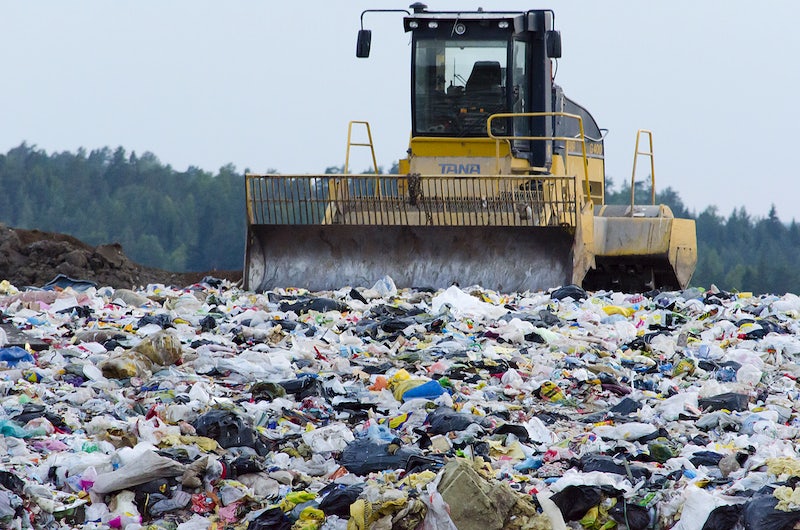The microplastics crisis is no longer a distant threat, it’s a pervasive problem infiltrating our oceans, soils, and even our bodies. These tiny petroleum-based particles, derived from the oil industry’s plastic production, persist for centuries, wreaking havoc on ecosystems and human health. But what if the solution lies not in battling nature, but in harnessing it? American agriculture, a powerhouse of innovation and scale, could take on Big Oil by replacing petroleum-based plastics with biodegradable alternatives grown from the land. This shift could invigorate rural economies, tackle plastic pollution head-on, and position farmers as unlikely heroes in the fight for a cleaner planet.
The Microplastics Menace
Microplastics (fragments smaller than 5mm) come from degraded plastic products, synthetic textiles, and industrial processes. They’ve been found in everything from Arctic ice to human blood, with studies estimating that the average person ingests about 5 grams of plastic weekly, equivalent to a credit card. Petroleum-based plastics, born from Big Oil’s refineries, are cheap, durable, and ubiquitous, but their persistence is their curse. They don’t biodegrade; they just break down into smaller, more insidious pieces.
Agriculture isn’t innocent in this crisis. Plastic mulch films, irrigation tubing, and packaging litter farms, contributing to soil and water contamination. Yet, the same industry that’s part of the problem could lead the solution by pivoting to biodegradable plastics made from crops like corn, sugarcane, and soybeans.
Biodegradable Plastics: The Agricultural Alternative
Biodegradable plastics, such as polylactic acid (PLA) and polyhydroxyalkanoates (PHA), are already proving their worth. PLA, derived from fermented plant sugars, is used in compostable packaging, cups, and even medical implants. PHA, produced by bacteria feeding on plant-based feedstocks, breaks down in soil and marine environments without leaving toxic residues. Companies like NatureWorks and Danimer Scientific have scaled these materials, with PLA already in use for products like compostable straws and food containers.
These materials aren’t just eco-friendly dreams—they’re practical. PLA, for instance, can be processed using existing plastic manufacturing equipment, reducing the need for massive infrastructure overhauls. PHAs, while more expensive, offer superior biodegradability, even in challenging environments like oceans. Research from the University of Georgia suggests PHA-based plastics can degrade in soil within months, compared to centuries for petroleum plastics.
Barriers to Entry: Why Haven’t We Switched?
Despite their promise, biodegradable plastics face steep hurdles. Cost is the biggest barrier—PLA and PHA are 20-50% more expensive than petroleum-based plastics like polyethylene and polypropylene. Big Oil’s economies of scale, built on decades of subsidies and infrastructure, keep traditional plastics dirt cheap. In 2024, global plastic production reached 400 million tons, with biodegradable plastics accounting for less than 1% of the market.
Regulatory inertia also slows progress. The U.S. lacks consistent standards for biodegradability, leading to confusion and greenwashing. Some “biodegradable” products require industrial composting facilities, which are scarce in rural areas. Meanwhile, Big Oil’s lobbying power ensures tax breaks and lax regulations favor fossil fuel-based plastics.
Infrastructure poses another challenge. Scaling biodegradable plastic production requires investment in agricultural feedstocks, biorefineries, and waste management systems tailored to compostable materials. Farmers need incentives to grow crops like switchgrass or corn for bioplastics rather than food or fuel, especially when commodity prices fluctuate.
The Agricultural Opportunity
For American agriculture, biodegradable plastics represent a game-changer. The U.S. produces over 500 million tons of corn annually, with much of it diverted to ethanol and animal feed. Redirecting a fraction to bioplastic production could create new revenue streams for farmers. A 2023 USDA report estimated that scaling bioplastics could generate $10 billion in annual agricultural revenue by 2030, creating jobs in rural communities hit hard by consolidation and trade wars.
Big Ag has the clout to challenge Big Oil. Companies like Archer-Daniels-Midland and Cargill already process vast quantities of plant-based materials and could pivot to bioplastic feedstocks. By partnering with bioplastic innovators, they could build a supply chain rivaling petroleum plastics. Imagine cornfields in Iowa fueling a revolution in sustainable packaging, or sugarcane plantations in Louisiana supplying compostable mulch films.
This shift could also restore soil health. Unlike petroleum plastics, biodegradable mulch films break down into organic matter, reducing soil contamination. Studies from Purdue University show that PHA-based mulches can improve soil microbial activity, potentially boosting crop yields. Farmers could market their products as “plastic-free,” tapping into consumer demand for sustainability.
Tackling Plastic Pollution
Switching to biodegradable plastics wouldn’t just benefit farmers—it could dismantle the microplastics crisis at its source. By replacing single-use plastics with compostable alternatives, we could slash the 8 million tons of plastic entering oceans annually. Biodegradable plastics, when properly managed, break down into water, CO2, and biomass, leaving no toxic legacy. Even in landfills, they degrade faster than petroleum plastics, reducing long-term pollution.
The ripple effects are profound. Cleaner oceans mean healthier fisheries, vital for coastal economies. Reduced soil contamination protects food security. And although we here at AgroWars do not think cutting greenhouse gas emissions is a top priority, plastic production accounts for 3-4% of worldwide emissions, so this move should be embraced by “green” initiatives.
The Path Forward
To make this vision reality, we need bold action. Policymakers must level the playing field with subsidies for bioplastic production and taxes on petroleum plastics. A federal standard for biodegradability would ensure products meet strict environmental criteria. Investment in rural biorefineries could create jobs and infrastructure, while public-private partnerships could fund R&D to lower costs.
Consumers have a role, too. Demand for sustainable products is already pushing companies like Coca-Cola and Nestlé to adopt PLA packaging. Farmers’ markets and co-ops could lead by example, using compostable bags and containers to showcase agriculture’s potential.
Big Ag taking on Big Oil isn’t just a pipe dream—it’s a necessity. By embracing biodegradable plastics, American agriculture can lead a revolution that saves the planet, boosts rural economies, and proves that the land can solve problems the oil rigs never could. The microplastics crisis is daunting, but with fields of corn and ingenuity, we can grow our way out of it.


